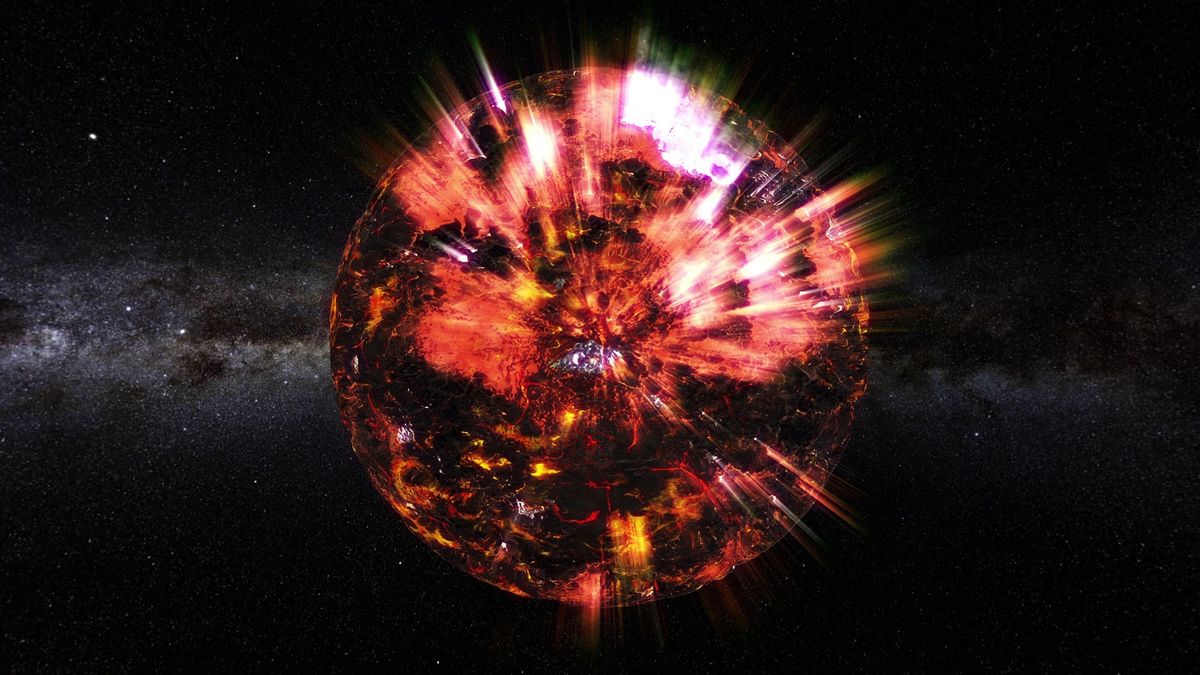
Astronomers have discovered black widows and redbacks in space. While these cosmic objects don't kill and eat their mates, the stars share their eight-legged counterparts' violent behavior toward companions.
In addition to the run-of-the-mill spider stars, the researchers also discovered a bizarre black widow-redback crossbreed. The scientists used the now-destroyed Arecibo telescope in Puerto Rico to discover the weirdo stars.
Spider stars are types of millisecond pulsars, or neutron stars that act like precise clocks in the sky, whirling around at least once every 30 milliseconds and flashing like a lighthouse with each rotation. Neutron stars, the tiny, compressed cores of old, exploded stars, often rip material from other stars locked in binary orbits with them and use the push of that infalling material to get up to pulsar speed. Spider stars are rare and special versions of these stars though: They orbit so close to their binary companions that they blast away their surfaces, inhaling vast amounts of material like a spider tearing its partner limb from limb.
In a new paper, researchers identify three new black widows and a redback in the Milky Way. They also found a spider star that defies categorization, almost like a crossbreed of the two species.
Related: The 12 strangest objects in the universe
When a spider star has reduced its companion to significantly less than a tenth the mass of the sun (usually 0.02 to 0.03 times the sun's mass), that star is called a black widow. Redbacks have heftier companions that boast more than a tenth of the sun's mass. These binary companions of redbacks pass between the spider star and Earth periodically, creating temporary eclipses. The shriveled companions of black widows don't typically pull off that trick.
The seeming crossbreed star is difficult to categorize. For now, researchers have labeled it a redback because its companion sometimes eclipses its ticking light. And that companion has a mass at least 0.055 times the mass of the sun (possibly larger), which would be quite heavy for a black widow, though quite light for a redback. For now, the exact mechanisms of that system are still a mystery.
Studies like this might get harder in the future. The paper, published Jan. 1 to the arXiv database, relied on data collected between 2013 and 2018 using the Arecibo 305-m radio telescope which has since collapsed, as Live Science reported.
Originally published on Live Science.
"now" - Google News
January 18, 2021 at 07:12PM
https://ift.tt/3bM1evr
Now-dead radio telescope finds bizarre venomous-spider star - Livescience.com
"now" - Google News
https://ift.tt/35sfxPY
Bagikan Berita Ini















0 Response to "Now-dead radio telescope finds bizarre venomous-spider star - Livescience.com"
Post a Comment